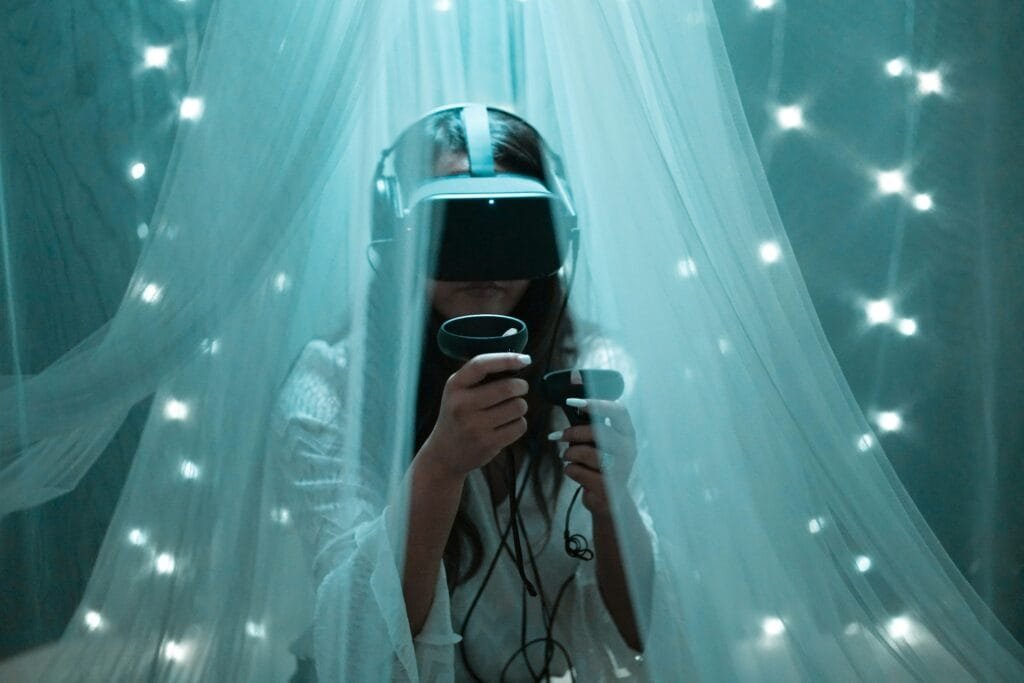Virtual reality—it’s supposed to be the next big thing, right? But here we are, years after its initial hype, still wondering when it’s going to truly take off. I’ve heard it all: “VR will revolutionize gaming, change education forever, and redefine how we connect with each other.” Sounds great in theory, but why hasn’t it happened yet? Let’s break it down, one reason at a time.

1. The Price Tag Problem
Let’s start with the obvious: VR is expensive. Even today, a high-quality headset like the Meta Quest 3 or the HTC Vive will set you back several hundred dollars. And that’s just the hardware! Add a powerful PC or console to the mix, and the costs pile up fast.
Sure, prices have come down over the years, but for most people, it’s still a luxury. Until VR becomes affordable for the average consumer, mass adoption will remain a pipe dream.
2. Comfort Is Still an Issue
Ever tried wearing a VR headset for more than 30 minutes? It’s not exactly pleasant. They’re bulky, they make you sweat, and let’s be honest—they’re not flattering.
Companies have worked to make them lighter and more comfortable, but we’re not quite there yet. For VR to go mainstream, it needs to feel as natural as putting on a pair of glasses.
3. Content Is King, and VR Needs More
Think about it: why do you spend hours on Netflix or scroll endlessly through TikTok? It’s the content. VR, on the other hand, still struggles with a lack of compelling experiences.
Yes, there are some amazing games like Beat Saber and Half-Life: Alyx, but they’re not enough to keep people hooked long-term. Until VR offers a library of diverse, must-have content, it’s going to be hard to convince the masses.
4. The Isolation Factor
Let’s face it: VR can feel… lonely. Sure, multiplayer games and social VR platforms like Rec Room exist, but strapping on a headset often means cutting yourself off from the real world.
For many, that’s a hard sell. After all, we’re social creatures. If VR can’t find ways to seamlessly integrate real-world connections, it risks staying niche.
5. Motion Sickness Still Ruins the Fun
You’ve probably heard someone say, “I tried VR once, but it made me nauseous.” Unfortunately, they’re not alone.
Despite advances in technology, motion sickness is still a major hurdle for VR. Until this issue is fully resolved, it’s hard to imagine millions of people embracing it wholeheartedly.
6. Limited Practical Applications
We’ve been told VR will change everything—education, healthcare, real estate, you name it. And while there have been exciting breakthroughs, they’re not exactly accessible to the average person.
Sure, a surgeon might use VR for training, or a homebuyer might take a virtual tour, but these are niche use cases. For VR to take off, it needs to become useful in our everyday lives, not just in specialized fields.
7. The AR vs. VR Debate
Here’s a twist: maybe virtual reality isn’t the future after all. Augmented reality (AR), which blends digital elements with the real world, seems to be stealing the spotlight.
Think about it—AR feels more practical. From Pokémon GO to AR shopping apps, it’s already being used by millions. Maybe VR’s slower adoption is because AR just fits into our lives more naturally.
Why I Still Believe in VR’s Future
Okay, I’ve been pretty critical so far, but don’t get me wrong—I still believe in VR. The technology is improving, prices are slowly coming down, and developers are creating better content every year.
We might not be there yet, but I think we’re on the right track. It’s just going to take more time than we expected. And honestly? That’s okay. Sometimes, the best things are worth waiting for.
Conclusion: So, When Will VR Finally Take Off?
If I had to guess, I’d say we’re still a few years away from VR becoming truly mainstream. It needs to be cheaper, more comfortable, and filled with content that people can’t resist.
But in the meantime, let’s not give up on the dream. After all, the future might not arrive on our timeline, but when it does, it’s going to be incredible.

